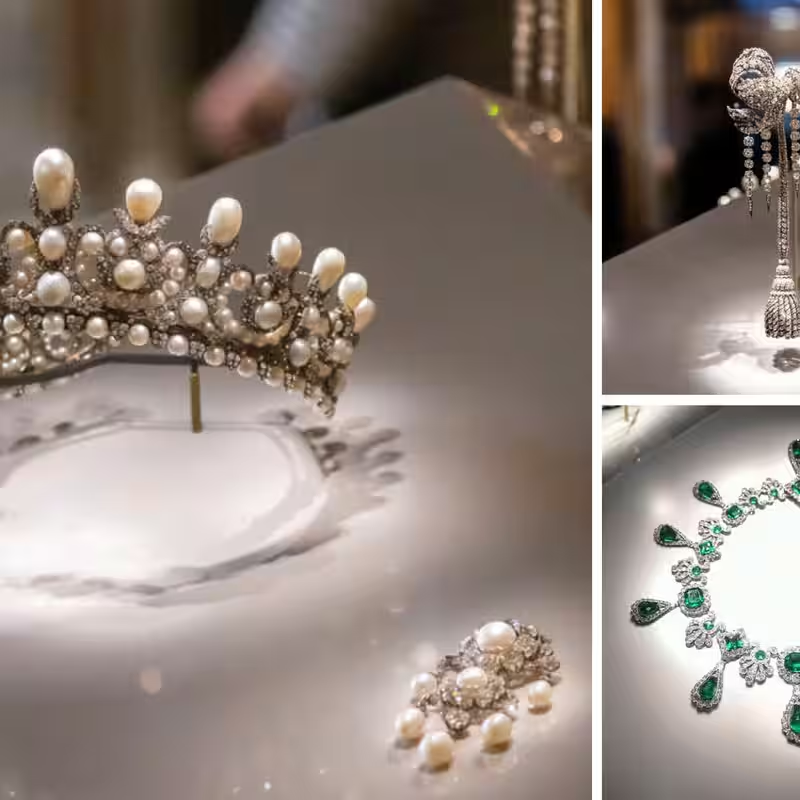In a brazen act that has stunned the art and security worlds, thieves pulled off a high-stakes heist at the iconic Louvre Museum in Paris, making off with a trove of priceless royal jewels. The robbery, which occurred on the night of October 19, 2025, targeted the famed Galerie d’Apollon and left a gaping hole in France’s cultural heritage .
Louvre Heist: What Exactly Was Stolen?
The stolen collection is not just any jewelry—it’s a dazzling assemblage of historical artifacts that once adorned French emperors and queens. According to France’s Ministry of Culture, the thieves escaped with nine pieces of irreplaceable jewelry from the Napoleon and French Sovereigns collection .
Among the missing items are:
- A magnificent diamond and emerald tiara once worn by Empress Eugénie
- A historic diamond necklace belonging to Queen Marie Antoinette’s court
- A rare sapphire and diamond brooch commissioned by Napoleon III
- Several pairs of royal earrings featuring Colombian emeralds and Golconda diamonds
- A ceremonial pendant with rubies from the Bourbon dynasty
These aren’t merely decorative—they are national treasures, each with centuries of history woven into their settings .
How Did the Louvre Heist Happen?
Initial reports suggest the thieves exploited a brief security lapse during a shift change. The Galerie d’Apollon, which houses the French Crown Jewels, is typically under 24/7 surveillance with motion sensors, laser grids, and armed guards. Yet somehow, the perpetrators bypassed multiple layers of defense in under seven minutes.
Investigators believe this was a highly coordinated operation—possibly involving inside knowledge. “This wasn’t a smash-and-grab,” said a senior Paris police official. “They knew exactly which cases to target and how to disable the alarms.”
Global Alarm Over Missing Crown Jewels
The theft has triggered an international alert through Interpol. Museums across Europe are reviewing their own security protocols, while auction houses and private collectors are being warned against handling any suspicious high-value jewelry.
What makes recovery especially difficult is that these pieces are so distinctive they cannot be sold openly. Experts speculate the thieves may attempt to dismantle them for raw gems—a cultural tragedy that would erase their historical identity.
Why These Jewels Matter
Beyond their staggering monetary value (estimated in the hundreds of millions), these items symbolize France’s imperial past. The emerald tiara, for instance, was a wedding gift from Napoleon III to his bride and later became a favorite of Empress Eugénie during the 1867 World’s Fair.
Losing them isn’t just a security failure—it’s like tearing pages from the nation’s history book.
What’s Next in the Investigation?
French authorities have launched “Operation Regalia,” a joint task force involving the National Police, DGSI (domestic intelligence), and Europol. Surveillance footage from nearby streets is being analyzed, and forensic teams are scouring the gallery for trace evidence.
Meanwhile, the Louvre remains open—but the Galerie d’Apollon is closed indefinitely. A digital exhibit is being prepared to showcase the stolen pieces, urging the public to report any leads.
Could This Be the Biggest Museum Heist in Decades?
While not the largest by number of items, this robbery is arguably the most audacious since the 1990 Isabella Stewart Gardner Museum theft in Boston. The symbolic weight of the Louvre—and the specificity of the loot—makes this a landmark case in art crime history.




